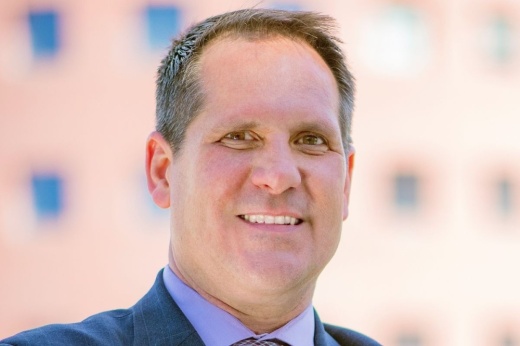H-GAC is a regional organization through which local governments consider issues and cooperate in solving problems in areas such as transportation. Papsdorf, who stepped into the role of chief transportation officer in June, spoke about the biggest priorities and challenges for transportation in the Greater Houston area as well as new trends he is seeing in mobility needs across the region.
The following interview has been edited for length and clarity.
What is your professional background and how did you get into this role?
I’m an urban transportation planner by training, and I’ve served in a variety of transportation planning, government relations and policy roles at the local, regional and state levels. Prior to coming to the Houston region, I led the Denver metropolitan planning organization as the transportation planning and operations director at the Denver Regional Council of Governments.
What are your responsibilities as the chief transportation officer?
I have the honor of working with a group of dedicated professionals in service to the Houston region. With the Transportation Policy Council, we partner with local, regional and state agencies to plan, prioritize and invest in transportation system improvements to improve the lives of the people who live and work here. That means marshaling our resources to achieve the region’s transportation goals: improve safety, keep the system well maintained, move people and goods efficiently, strengthen economic competitiveness and protect the environment.
In your view, what are the biggest priorities for transportation and mobility in the Greater Houston area?
I view addressing the region’s safety, congestion and air quality issues as paramount. If we can address those core issues, we will have a transportation system that contributes to a thriving and livable region. As an example, during the last three months of 2024, we experienced over 47,000 crashes on the region’s transportation system. Not only was each of those crashes probably the worst thing that happened that day to the people involved in them, but those crashes also make it harder for people to get to work on time, slow down the delivery of goods to our stores and put our emergency responders at risk. That adds to our congestion, worsens our air quality and hurts the economy.
What are some of the challenges this area has when it comes to transportation and mobility?
The Houston region is large, dynamic and growing. Our population tripled over the past fifty years to 7.7 million people, and we expect to grow by another 3 million people over the next 20 years. The choices we make about how to manage and improve the transportation system in response to that growth will have a big impact on the long-term success of the region as a desirable place to live and do business. We also have challenges with congestion and our ability to efficiently move freight through the region. In fact, according to a study by the American Transportation Research Institute, the Houston region has eight of the nation’s top 100 truck bottleneck locations and two of the top 10. As a port region, our economy depends on being able to move goods efficiently.
The H-GAC is currently in the process of updating its Regional Transportation Plan. How will that plan guide transportation and mobility projects for the region in the near future?
The Regional Transportation Plan is arguably the most important thing we do. It identifies the transportation investments we will make over the next 20 years that best achieve our region’s goals. Because we don’t have enough resources to do everything we want to do, let alone need to do, we must prioritize. Then we work together as a region to implement those improvements.
Are there any new trends you are seeing in mobility needs across the region?
Like most regions around the country, we’re still experiencing changes in travel patterns post-COVID, from some people working from home some of the time. E-commerce and increased home deliveries are influencing transportation needs. Finally, changing technologies like self-driving vehicles, artificial intelligence ... will change the way we use and experience the transportation system over time.
What are some misconceptions you think people have about transportation and mobility in general?
That drivers pay the full cost of road construction and maintenance. While it’s true that we pay taxes on fuel that go toward the transportation system, there are lots of federal, state and local general revenues that are expended to maintain and improve our roads. That’s largely because the federal gas tax rate hasn’t increased since the early 1990s and since vehicles have gotten more fuel-efficient since then, we aren’t collecting as much tax per mile driven.
What do you want people to know about the H-GAC and the role it plays in the region’s transportation and mobility projects?
At our core, we are conveners. We bring people together to wrestle through difficult issues and collaborate to make the best possible decisions to address the region’s transportation problems and build a livable future. We support that by collecting, analyzing and sharing data and information, and preparing plans and strategies.
Is there anything else you’d like me to know or anything else to add?
At H-GAC, we believe our region’s transportation system works best when the people who use it every day have a voice in shaping it. That’s why public participation is at the heart of everything we do. When community members share their ideas and experiences, we’re able to make better decisions that support mobility, clean air and quality of life in every community. There are many ways to get involved—explore projects, take surveys and learn about upcoming meetings at https://engage.h-gac.com.





